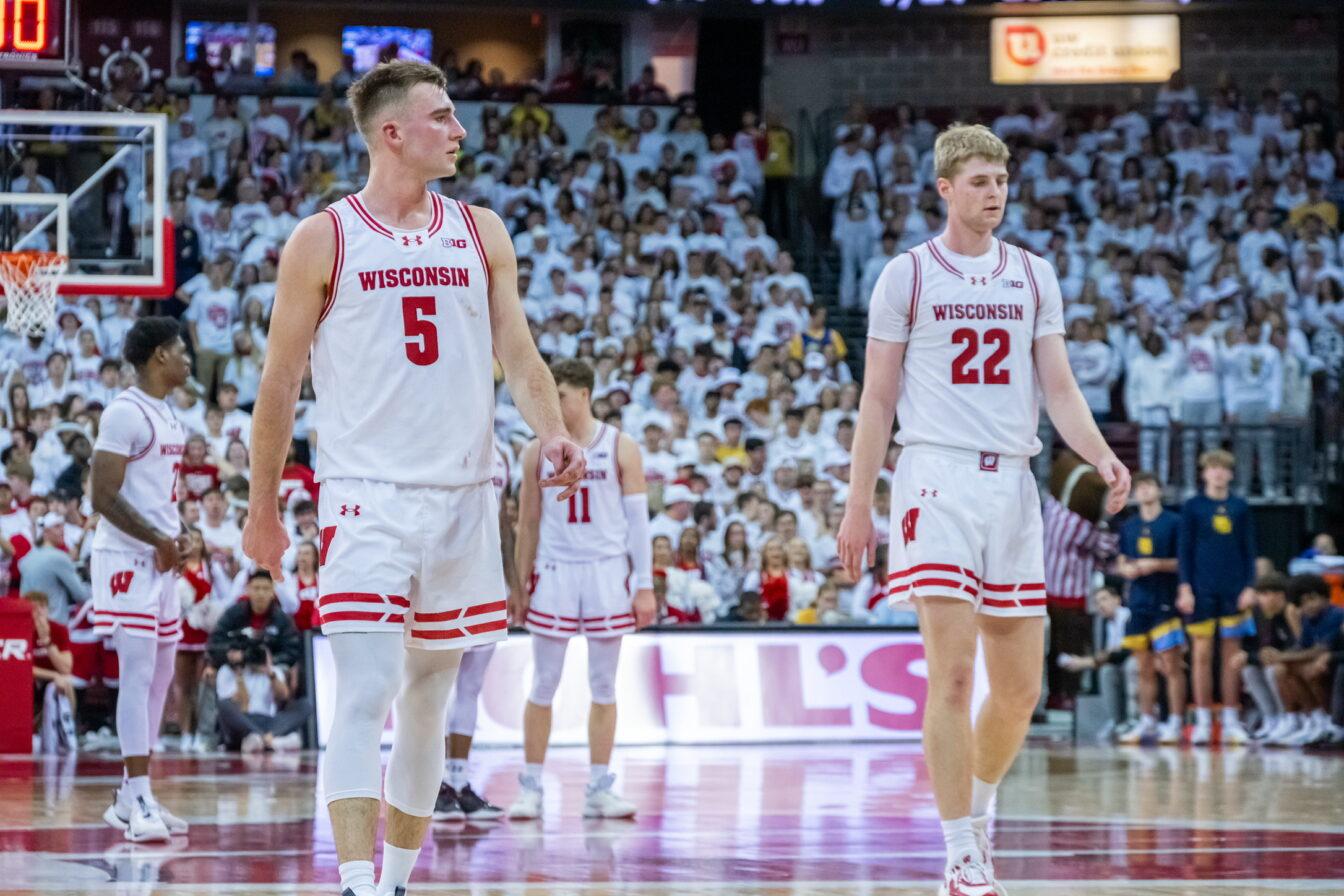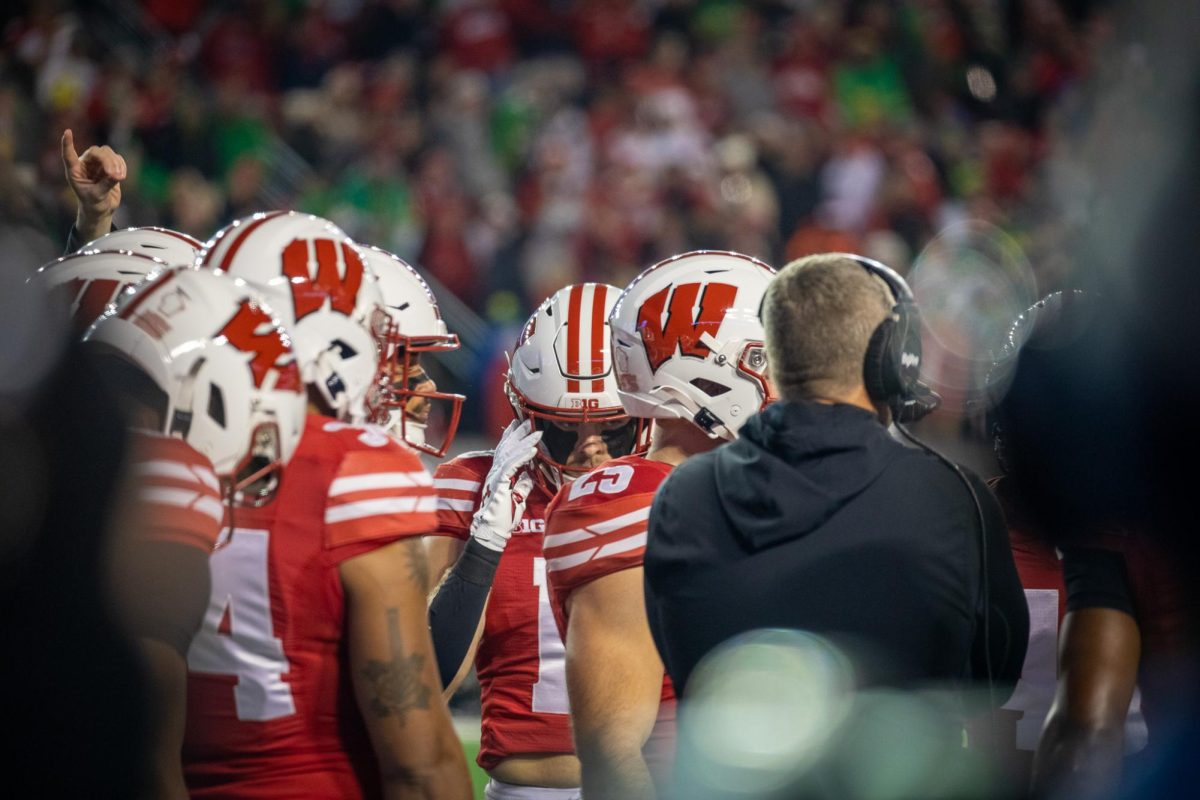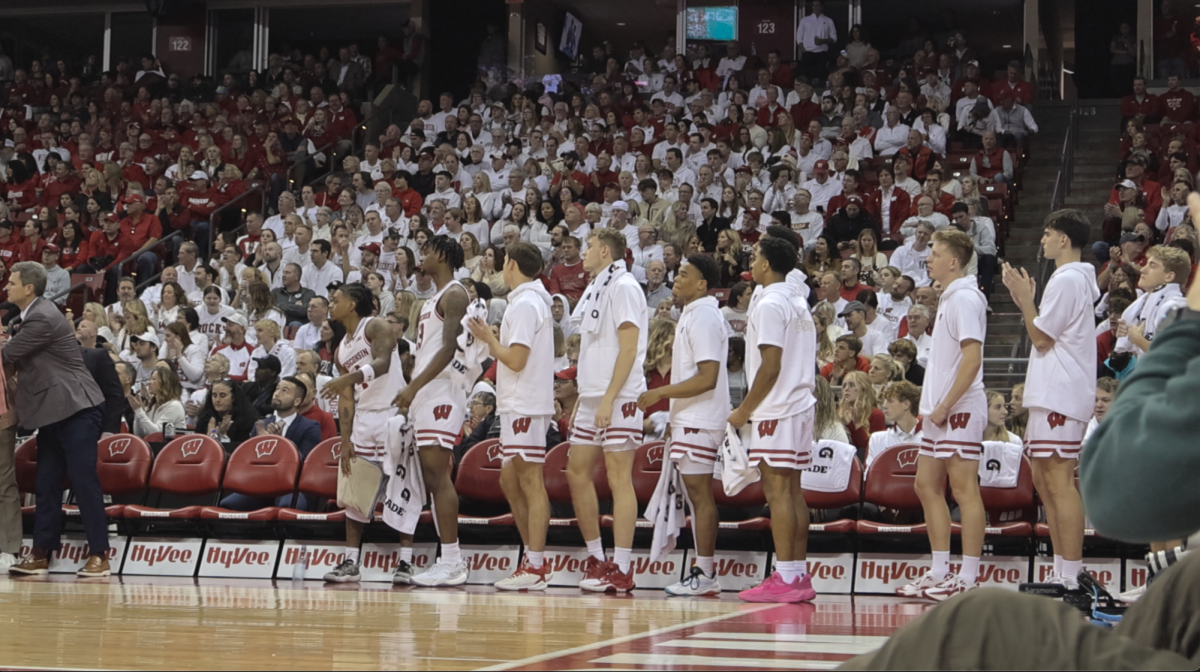Out on the other side of the Midwest, Penn State alum Terry Pegula donated $88 million – according to the Times-Tribune, the largest private gift in PSU history – to the PSU to fund and create a Division I men’s hockey program.
Back in Madison, Badger Bob Johnson is rolling in his grave. The hockey program still can’t get the required gift funding for its proposed practice facility – in April they were $2 million short in that category. And PSU gets $88 million from one person.
So instead, Captain Sean Dolan and the men’s hockey team will continue to ride their mopeds along the icy stretches of John Nolan Drive to get to practice. The six-time national champion Badgers practice in the Humanities building of practice facilities; that ice rink is the “Arrested Development” movie of proposed buildings.
Back to Penn State though. The Nittany Lions now become the second-largest school behind Ohio State to field a Division I hockey program. They also become the sixth Big Ten school to field a D-I hockey program, along with Wisconsin, Minnesota, Michigan, Michigan State and Ohio State.
The NCAA requires a minimum of six teams to form a conference.
Anyone hungry for a Big Ten of ice hockey?
I hope not.
For the uninitiated, Wisconsin competes in the Western Collegiate Hockey Association (WCHA), along with traditional rival Minnesota. The WCHA is also home two of the three schools that own more national titles than the Badgers, in Denver and North Dakota.
The UM, MSU and OSU men’s teams are in the Central Collegiate Hockey Association, with other notable teams being Miami of Ohio and Notre Dame. Ohio State’s women’s team is in the WCHA.
But with Penn State giving the nation’s oldest conference a half-dozen teams, there’s a lot of talk about the Big Ten schools jumping ship for, well, the Big Ten. Clearly the conference isn’t concerned about numerical accuracy anymore. There’s a lot of talk that various athletic directors – including UW’s Barry Alvarez – are in favor of the possibility of a hockey version of the Big Ten.
I want to ask, “Why?,” but I already know why.
The Big Ten is a marketable brand, which could form a new set of hockey brands, now that one of its biggest brands in Penn State has now joined the fray. The Big Ten network would love to fill its Friday and Saturday night slots with hockey games, if it means viewers and money.
But from a hockey standpoint, it just doesn’t make a whole lot of sense.
Right now, the Badgers have a cozy position in the WCHA – which is essentially to college hockey what the SEC is to college football. The Badgers play top competition week in and week out, and that means a lot when the postseason rolls around, as evidenced in this past springs’ awarding of No. 1 seeds in the NCAA tournament to Denver and Wisconsin, despite neither winning their conference tourney.
That’s not to give Michigan, which leads the nation with nine national championships in men’s hockey, or Michigan State, which owns three titles of its own, the shaft. But Ohio State’s hockey team – now in the very capable hands of former Badgers assistant Mark Osiecki – is essentially dead weight for now, and the other big-name teams in the CCHA, Miami and Notre Dame, wouldn’t be making the jump.
This Big Ten of hockey would conceivably have the Badgers, Gophers and Wolverines beating each other up on the weekends they’re not feasting on the Nittany Lion Cubs and the Buckeyes. Not an ideal situation, methinks.
And if Big Ten hockey expands to say, Illinois, sure, that adds more teams. There’s talk of setting those plans in motion as well. But how long before these new teams are actually competitive? I have to guess that most of the top talent in those states will still flock to the DUs and BCs of the nation, rather than spend two to four years trying to build a program from the ground up.
It’s not like this is basketball or football, where there are recruits flooding in from every which direction. Hockey is still a niche sport. Most of the top recruits are going to come from Minnesota, Michigan and New England. Canadian recruits are a bit more rare, since most college-aged Canadian hockey players can play major-junior hockey in Canada and get paid to do it – it’s considered a better path to the NHL by some.
Long story short, I don’t think there are enough quality hockey players to make a hypothetical Big Ten the juggernaut Jim Delany might want it to be.
A Big Ten in hockey would also inevitably have some ripple effects on the college hockey world as a whole. We all saw this summer what kinds of messes arise when conferences are trying to add members or deal with departing members.
Sure, Big Ten teams could play lots of their rivalry games out of conference (Minnesota-North Dakota, Ohio State-Miami, for example), but how many small CCHA teams are going to suffer because Michigan fans are no longer guaranteed to be flocking to their schools for the weekend?
Hockey East wouldn’t suffer much from a Big Ten exodus. The WCHA would probably remain the strongest conference, even with Minnesota and Wisconsin gone – that’s how strong DU, CC and UND are.
In the end, it’s really only the Big Ten schools that end up losing. Is it worth it to burn bridges and lower overall competition to spend a few years nurturing a brand new league? If you’re anyone in the conference but Penn State, I venture the answer is no.
Adam is a senior majoring in journalism. Think a Big Ten of hockey would be exciting, or should UW just stay put? Email him at [email protected].













